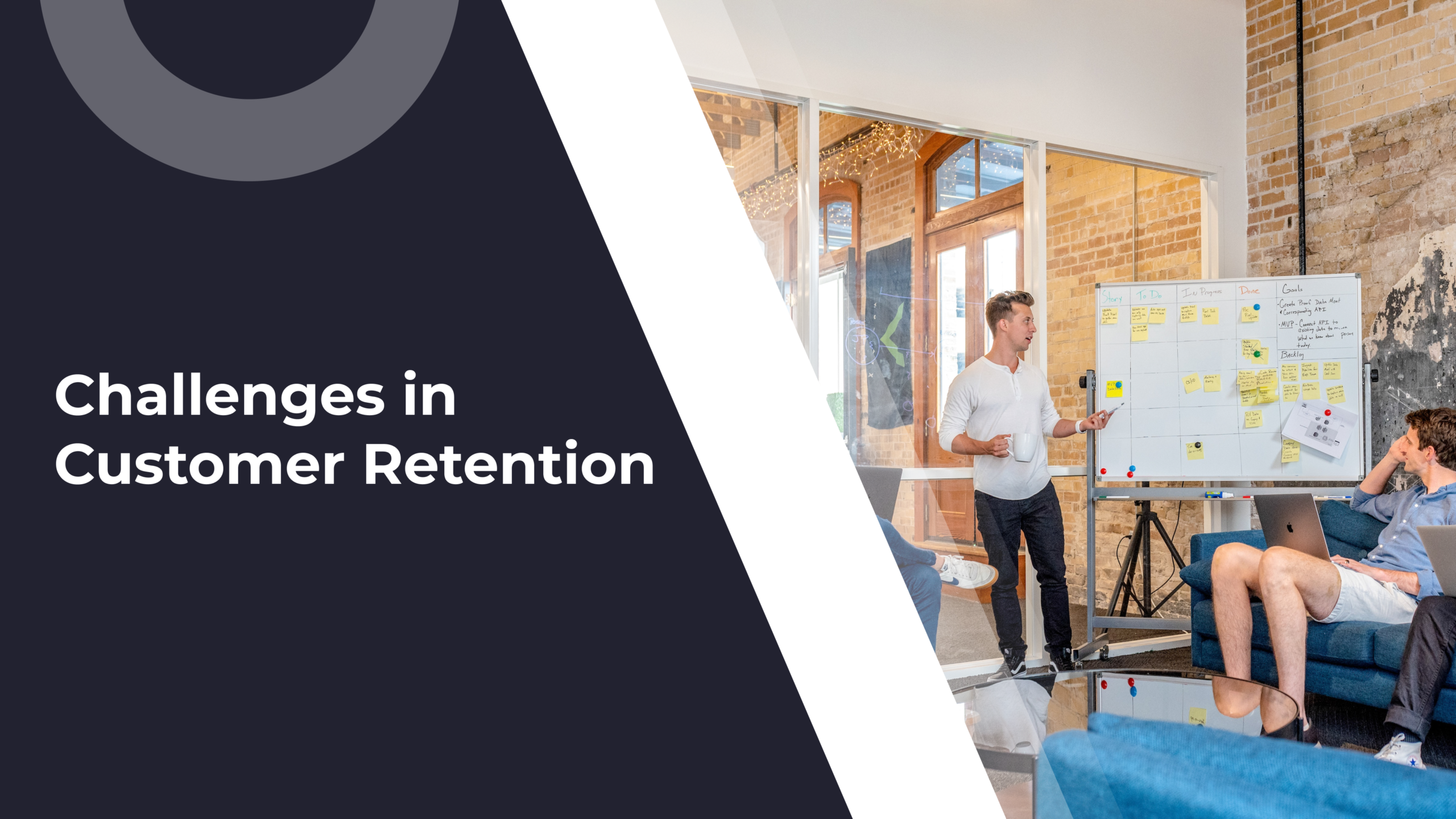If you’re like most customer-facing companies, you’ll feel like you spend most of your time thinking about how to boost conversions. After all, more conversions mean more sales and more engaged customers – it’s the basics of keeping your company up and running.
While there are many popular tips for optimizing conversion rates, lots of companies are forgetting about the core principle of sales: it’s all about the customer. There’s no point in spending ages designing new marketing materials or building streamlined landing pages if you don’t know enough about your target audience.
That’s why sales intelligence is quickly becoming an essential approach for companies that are looking to boost conversions. Ultimately, sales intelligence is all about collecting as much information about your customers and products and taking action using that data. This will increase conversions as you can tailor every aspect of your business around the customer.
Sounds simple, right? That’s why sales intelligence is such an effective approach – it’s basically common sense. However, if you want to implement sales intelligence and start to see its benefits in your company, you’ll need to know a bit more about how it works. Read on to find out more.
What Is Sales Intelligence?
Unless you’ve been living under a rock, you’ve probably noticed that data is transforming how companies across a whole range of different industries do business. Whether it’s using streaming data ingestion tools to analyze large sources of information or monitoring supply chains to secure your stock, data is making it easier to work smartly.
Original image created by author
Sales intelligence is the application of data to your sales processes. By collecting and analyzing data from a variety of sources, you’ll have some actionable insights that can be used by sales teams to target specific customers or generate accurate customer profiles.
This means that sales intelligence should be a crucial part of both marketing and sales. Marketing teams can use it to construct more efficient and personalized marketing campaigns while sales reps will use sales intelligence to create solutions for specific prospects. This means that sales intelligence can help to boost conversions across your operations.
In most cases, sales intelligence necessitates using a sales intelligence tool – a piece of software that manages the raw data and allows everyone in your team to easily access the insights that come from that data. Using third-party software will mean that you can easily implement sales intelligence into your workflow.
Sales Intelligence vs Business Intelligence: What’s the Difference?
Although they are linked, there are key differences between sales intelligence and business intelligence. So before you begin collecting sales intelligence data, it’s worth getting to grips with those differences. Because you’ll glean separate insights, you need to understand which to use and when.
Original image created by author
The key is that while business intelligence focuses on the ‘what’ and ‘how’, sales intelligence focuses more on data that shows ‘why’ something happened. They both look at relevant data to inform decisions based around either sales practices or the wider business. But business intelligence will use findings to create a long-term plan that’s typically slow to implement, while sales intelligence reports will outline immediate steps.
How Do You Collect Sales Intelligence Data?
If you want to use sales intelligence as a key pillar of data-led growth, you’ll need to collect the right data. Rather than using just one source, sales intelligence data should come from a variety of different sources. This can include websites and social media sources, site usage and browser cookies.
So what type of data should you focus on? It will include the basic firm demographics – that is, details about a firm such as location, industry, etc. But it can also include data on customer purchase patterns, technology used, and buy signals.
Much of this data can be gleaned from a robust sales intelligence tool such as dedicated software. If you find the right platform, it can even gather information from multiple sources for you. If you want to reach the full potential of your sales intelligence tools, you’ll need to ensure that you have data from each of the following categories:
1. Contact data
When it comes to boosting conversions, it should be obvious that you have a huge range of accurate contact data that will allow you to stay in touch with prospects. Without basic information about your leads, there’s no chance that you’ll be able to get those leads to convert.
Good contact data includes:
- A lead’s name
- Job title and department
- Contact details such as a phone number and email address
- Social media profiles
A sales intelligence approach will then use this contact data alongside other information to build a targeted and personalized toolkit for prospects. In addition to this, contact data can be used to construct target profiles so that your marketing efforts are also data-driven.
One of the quickest ways to gather contact data is by looking at where you already store customer data, such as your customer relationship management (CRM) system or email list. If you don’t already, it’s worth creating a dedicated sales intelligence database where you can store contact data about companies and relevant employees. Just be sure to keep it up-to-date so your contact details are accurate.
Of course, you could also manually trawl sites like Google, LinkedIn, or company websites to gather contact data. But modern sales intelligence software will automate and speed up the process.
2. Account data

Image Sourced from UserGems.com
As well as contact data, any B2B company will need to collect company data to have an effective sales intelligence strategy.
Firmographic data you should be collecting includes:
- Company name
- Company type and size
- Location (typically HQ)
- Industry
- Revenue
- Company valuation
- Technology stack
Knowing the actions and properties that are linked to specific accounts will let you break down how people are using your products or services, such as which VoIP phone services are most popular with clients.
This will be crucial when it comes to assessing the efficiency of your marketing campaigns as well as letting you have a better understanding of your customers – meaning that you will know which services your sales reps should push in order to boost conversions.
Look for an account-based sales intelligence tool to help you gather this data and take action. For example, tools like Cognism, Crunchbase, Apollo, and Owler will help you identify high-quality leads at companies that are in a specific industry or at a particular stage of funding. Armed with this information, your sales team can focus on these accounts with a higher chance of closing a deal. Many can also be integrated with existing platforms like Salesforce.
For example, With Intelligence used a sales intelligence tool to access new account data and reduce time sourcing information. Previously, team members would manually scout platforms like LinkedIn or company websites to gather account data. But using a sales intelligence tool, they were able to pull 500-600 users’ contact information into its CRM in just seven months.
3. Buy signals and intent data
What makes sales intelligence really intelligent is the integration of real-time buy signals and intent data into your analysis and actions. This type of data gives you insight into which products or services leads might be interested in and when they are most likely to make a purchase.
To gather this type of information, you’ll need to analyze prospects’ online behavior and activities. This might include actions like searching for and comparing products or reading online reviews.
Here are two main types of intent data to be aware of:
- First-party: This is data collected about your audience through digital channels that you own. This might include your website, app, social media platforms like Facebook or LinkedIn, or even surveys sent to your customers.
- Third-party: This includes information from external sources, giving you wider insight into buyer intent across the industry. You can use intent data providers for this, including Bombora, Demandbase, Lead Onion, or ZoomInfo. These tools collect consent-based data from B2B sites where potential buyers research products. Other sources include large data cooperatives and bidstream data from a publisher’s website. Whichever source you choose, make sure it prioritizes trust and transparency in its data collection methods.
Looking at the type of online content they consume and engage with, you can get a better understanding of prospects’ wants and needs and target prospects most likely to make a purchase in the near future. In addition to this, intent data can be used to improve customer retention: if an existing customer is looking for other services, your team will be able to try to win them back.
Siemens Digital Industries, a leader in factory automation, used intent data to reshape its marketing and sales tactics. Using an intent data provider, it was able to better identify companies showing buying intent early in their projects.
Screenshot Sourced from Bombora.com
Acting on these insights, their sales acceptance from marketing qualified leads (MQLs) rose from 1% to 90% while gaining a win/loss rate of 94% over 400 new pipeline opportunities.
How to Leverage Sales Intelligence to Improve Sales
Now that you know a bit more about how sales intelligence works and what data it uses, it’s time to consider how your business can leverage sales intelligence to actually improve sales. That is, how can you act on the data you gather above and make sure you put it to good use?
1. Update customer profiles
There’s nothing new about using data to have a better understanding of your customers and prospects. However, traditional CRM approaches can easily cause your customer data to go out of date. This can mean that your sales reps are forced to work with outdated and inaccurate information, ensuring that any lead conversion is unlikely.
Use your sales intelligence tools to ensure data is current, and cross-reference this with data from other sources to make sure that all customer information you hold is accurate. This means that sales reps will have a full toolkit of information – including buying history, budget information, and job roles – that they can use to make sure that their sales pitch is perfectly prepared.
2. Personalize the experience
There is no doubt that knowing more about your customers will help you to improve your conversions, both when it comes to making individual customers more likely to make a purchase and when you’re looking to craft a more effective general marketing strategy or campaign.
This is especially obvious when you use sales intelligence tools to help you to personalize your sales strategy. Now that you have an easily accessible and broad pool of information about clients, your sales teams can develop genuinely individualized approaches for each prospect and send personalized offers and sales pitches.
As well as this direct impact on sales and marketing, there’s a more indirect way in which this easier personalization will lead to more conversions. Using this data throughout the customer lifecycle, you can boost your customer experience analytics, as clients will feel that they’re always treated as individuals. This will improve your retention rates and lead to more sales.
3. Focus on lead generation
Sales intelligence data isn’t just about knowing more about existing customers and prospects that you’ve already identified. Many sales tools will have automatic features that help you to generate new leads, using data from existing prospects. Use these to identify potential customers who would have otherwise gone undetected.

Image Sourced from Hubspot
With these sales intelligence tools, you can build information about the sort of leads that are most successful and search the internet for similar companies or prospects to generate even more leads. This is a great way to save time by automating a crucial part of lead generation, while also ensuring that those leads that you do generate are likely to convert.
4. Act on real-time information
When you’re looking at how you can use sales intelligence tools to increase conversions, the most effective feature is being able to access real-time information about clients and prospects. Make sure sales reps are accessing detailed data that updates with every change, so they’ll be well-equipped to deal with prospects.
This real-time data isn’t just about ensuring that your sales team has access to up-to-date contact information and purchase details. Intent data gives you immediate access to key buying signals. So if you’re an AI SaaS company and spot a prospect who’s researching AI rule based solutions, be sure to swoop in with an offer.
Detailed and advanced real-time data means sales reps can be confident that they’re as well-informed as possible before attempting to make a sale. Leveraging AI for sales further enhances this process by providing actionable insights, predictive analytics, and personalized recommendations to close deals more effectively. Sales intelligence tools will always ensure this information is presented accessibly, allowing your reps to easily respond to the insights derived from this real-time data to boost conversions.
Benefits of Sales Intelligence
It should seem obvious by now, but let’s just summarize some of the key advantages of sales intelligence. After all, before adopting any shiny new approach or strategy, you need to understand how your business stands to benefit.
In short, sales intelligence can:
- Improve sales productivity and efficiency for everyone from sales executives to business development managers, significantly speeding up the sales cycle.
- Help sales teams more effectively research, qualify, and contact leads.
- Support sales execs in closing more deals by making the process quicker and easier.
- Streamline your company’s tech stack, helping to consolidate data to save employees time.
- Provide accurate, real-time insights with signal alerts for sales teams to act on.
- Personalize the sales strategy by providing accurate data to help teams identify key decision-makers.
Looking at the bigger picture, some of the latest sales intelligence statistics also show how valuable the market, AI tools, and using data in sales are:
- The global sales intelligence market was valued at USD 2.95 billion in 2022 is projected to grow at a CAGR of 10.8% from 2023 to 2030.
- The US Sales Intelligence Market is anticipated to grow at a CAGR of 9.2% from 2023 to 2030.
- 35.4% of the global market revenue was accounted for by North America in 2021.
- Lead management accounts for the largest revenue share of 35% in 2022. This high share is being put down to the increasing adoption of AI and cloud-based sales intelligence platforms like LinkedIn Sales Navigator.
- Top-performing companies are more than twice as likely to be leveraging AI for marketing purposes (28% vs 12%).
- According to a Harvard Business Review study, companies using AI for sales increased their leads by over 50% while reducing costs by almost 40-60%.
Sales Intelligence – The Future of Marketing and Sales
When it comes to boosting conversions, you need to ensure that your sales reps have the right tools and information to effectively reach out to prospects and convince them that your products or services are right for them. In the age of data, there’s no excuse for not properly equipping your sales reps, which is why sales intelligence is the way to win the customer game.
Whether it’s using detailed data to ensure that your customer profiles are accurate or leveraging intent data to respond to buying signals in real-time, using a sales intelligence tool is the best way to make use of customer data – and to boost your conversions for the future.







